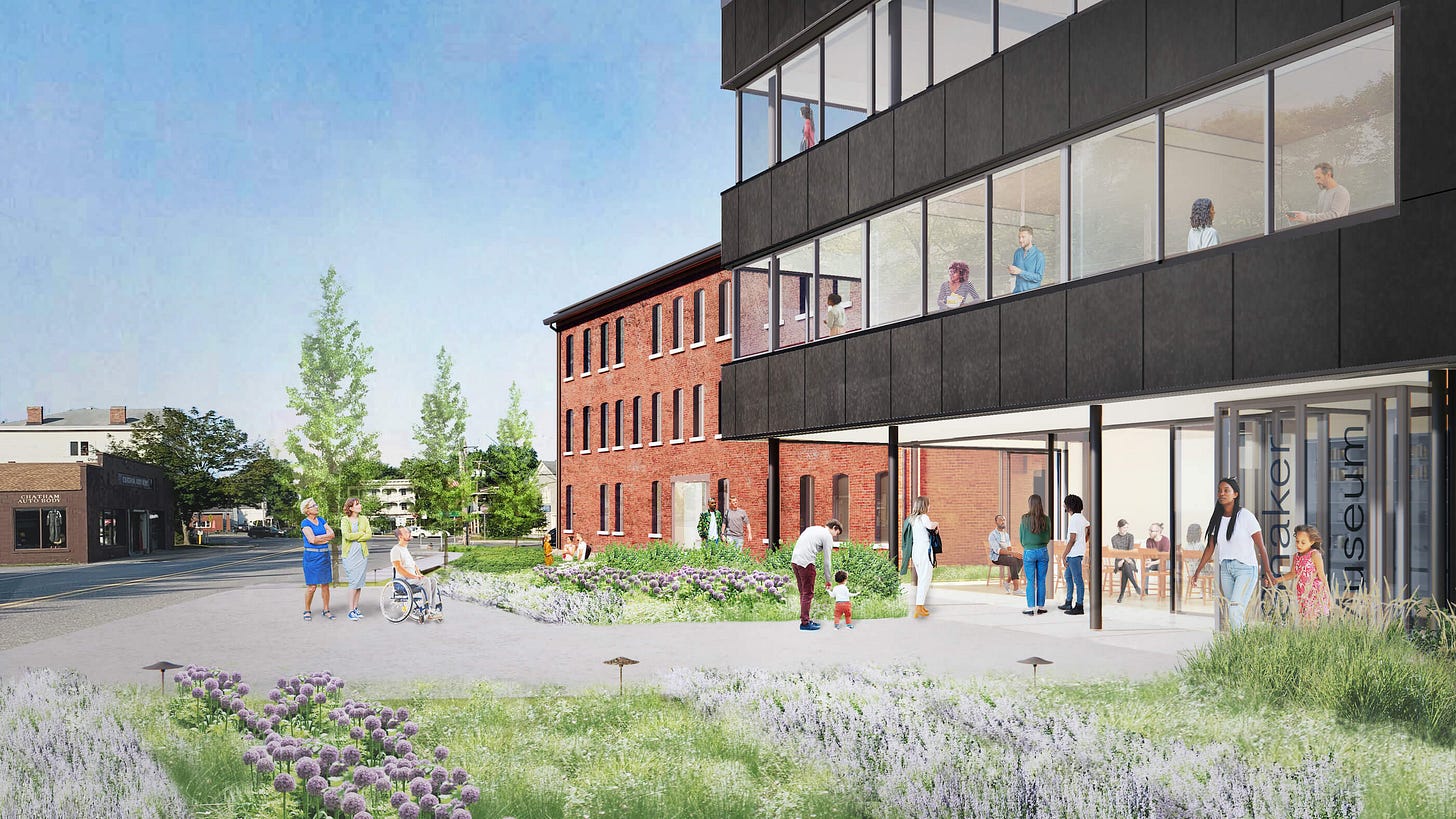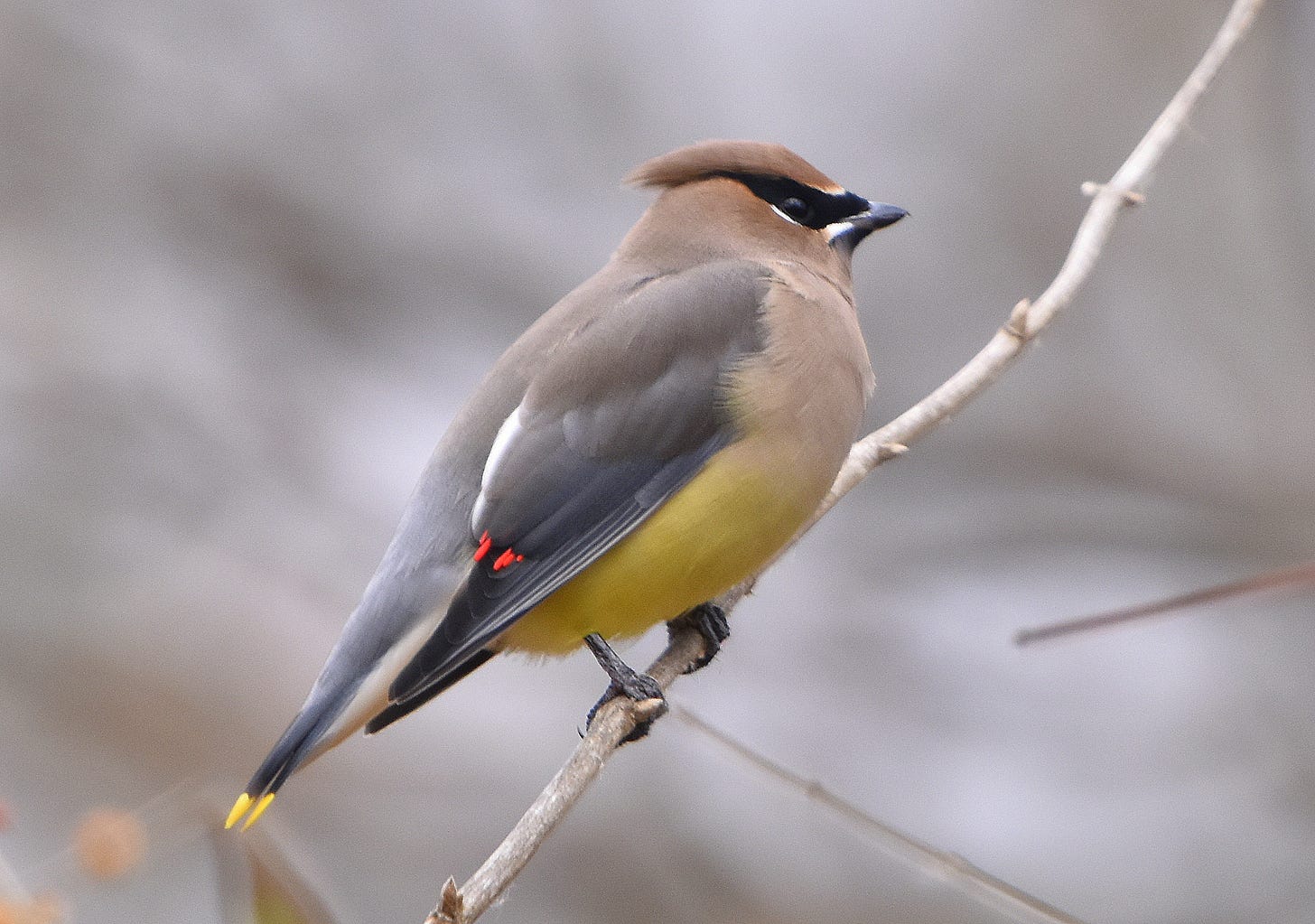Bounce, bounce. The sound of softly squeaking rubber.
I’m bouncing on a yoga ball in the dark. It’s the only way I can get my son River to sleep these days. He likes the motion and the darkness, likes being sandwiched against my body in a simulacrum of the womb. We bounce together like a buoy bobbing on the waves. The windows are open so we can feel the storm roll in—a sudden cool breeze that sends the humidity scattering—and we can hear it too. Bounce, bounce we go, a circus act of two, dancing to the rising applause of thunder and rain.
There’s much to be said about the weather these days. It’s no longer small talk—it’s big and urgent, impossible to ignore. The first week of River’s life, smoke from Canadian wildfires blew south and covered the East Coast in haze. An air quality advisory kept us inside for days. Every few weeks now it returns—a blight on bright summer days—as the burn continues and new winds bring the smoke back to our skies. The restlessness I feel being cooped up indoors is an ill-fitting mask for the grief beneath it.
There are other advisories too. Last week, two tornado warnings sent us fleeing to the basement, while an hour south and north of here, devastating floods took out roads and washed away lives, making rivers of it all. We are hedged in by wind and water and fire, caught in the crush of elements like flies under the swatter. And so we rock quietly in the dark, willing the walls to hold.
In the small town where I live, they’re turning an old warehouse building at the top of Main Street into a multi-million dollar museum for Shaker art. The building has beautiful bones, with terracotta colored brickwork and deep green trim. They haven’t made much progress yet, aside from knocking down the Pizza Den to make the main parking lot (a literal “paved paradise and put up a parking lot” situation—it was the best slice in town). But I’ve seen the mock-ups, the modern walls of glass that will reflect the clouds and hide precious artifacts within. The museum will be sleek and modern, its contents humble and old. But what strikes me most is that these things are being so carefully preserved in the midst of a diminishing world. It’s a beautiful and haunting idea—the very act of making a museum at this juncture in time strikes me as both delusion and devotion. How we continue to honor our past even as we blaze into the uncertainty of our future.
I wrote a song about it—the museum built at the brink of apocalypse. It’s one of nearly twenty tracks that will be a part of LP6. Writing songs like this helps me refocus my anxiety, causing the ambient emotion to coalesce into something more concrete. When it’s sung again and again, the feeling becomes more approachable, productive even. Writing reduces and reforms the initial emotion, like liquid wax cooling to make a candle before burning down again.
The song I wrote, called “The Museum,” is an attempt to look something horrifying in the face, when so often I just want to avert my eyes. It’s hard to talk about the climate crisis. To write about it, then—to let the words rake through my throat when I sing—is to take a pilgrimage across a bed of fire. We have to speak about it. We have to sing about it. This, I suppose, is the responsibility of the artist: to gaze at the flame, to walk the coals, and then find a way to transfer the memory of the burn.
I know that being dramatic
Is becoming a habit.
Wish I was laughing,
I just cannot see a way out of this.
And now they’re building a museum
On the corner of Main Street,
Preserving something while
We’re left to decompose in the heat.
Bounce, bounce. Beyond the window, lightning bugs trade messages with bolts of lightning. Tree branches thrash in the wind. I think of the cedar waxwings that forage at the top of the mulberry tree, how they must have sought shelter too, peeling away from the plump berries with a chorus of thin, high-pitched whines.
A group of waxwings, I once learned with delight, is called a museum. Like a school of fish or a murder of crows: a museum of waxwings. I like to think this means that when they flock together—with their streaks of lemon yellow and inky black feathers, edges red as match tips—they become an architecture, preserving this moment. An artful collection of bodies, imprinting themselves in the archive of my mind. This is the kind of museum I want to visit, the kind that feels the most in harmony with this world.
Before the weather alert came in on my phone and we retreated indoors, we watched the waxwings, River and I, as they flew above the warehouse construction site. Marveling at how a museum can be a desperate act and a loving one, an act of madness and protest and prayer. How it can also be a blur of birds beating their wings, as one, into the storm.








So visually present, profound yet such a vivid alive look at what is so remarkable in the ordinary. You have always had the poets sensibility, like weaving rivulets of fudge within vanilla ice cream: such a tortured metaphor I know, but to quote my friend, Matt Siliman, “what’s a meta for?” You paint images which color all our senses. Write on daughter.
Thanks for this, Nandi. Yes, it is a measure of our refusal to take in the urgency of this moment in our planetary history that we go on building museums! The planet will continue as she always has. With or without the cedar waxwings and the humans. The grief of the damaged world we bequeath to our children is almost unbearable. But bear it we must, as mothers always do. ❤️💔